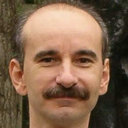The impact of neuroleptic medication on seizure threshold and duration in electroconvulsive therapy.
Ключови думи
Резюме
BACKGROUND
In most patients diagnosed with psychotic depression or schizophrenia and treated with electroconvulsive therapy, parallelly administered antipsychotic medication cannot be stopped. Antipsychotic drugs can influence both seizure threshold and seizure activity in different ways.
METHODS
The present study processes the data of 77 patients treated parallelly with electroconvulsive therapy and antipsychotic drugs. Oral doses of the antipsychotic medication administered the day before the electroconvulsive therapy, stimulus intensity, seizure durations, and impedance were analysed from session to session.
RESULTS
One group of antipsychotics (haloperidol, fluphenazine, risperidone, sulpirid) was not found to influence seizure activity: there was no significant difference in EEG and EMG registered seizure duration or in stimulus intensity between the treated and non-treated group. However, significant difference was found between the next treated and non-treated groups in 40% of the sessions in case of olanzapine, in 50% of the sessions in case of clozapine and in 57% of the sessions in case of zuclopenthixol in EEG or EMG registered seizure duration as well as in stimulus intensity. In the third group (quetiapine) there was a significant difference in each session (2nd session: EMG, p=0.02; 5th session: EEG, p=0.05, EMG, p=0.04). Most of the antipsychotics (olanzapine, clozapine, zuclopenthixol) have been shown to possess epileptogenic properties; only quetiapine reduces seizure activity.
CONCLUSIONS
In the clinical use of olanzapine, clozopine and zuclopenthixol seems epileptogenic, whereas in the case of quetiapine seizure reducing properties must be taken into account. Together with the consideration of the accompanying somatic and neurologic disturbances and with the concomitant medications this can influence the treatment of choice.



